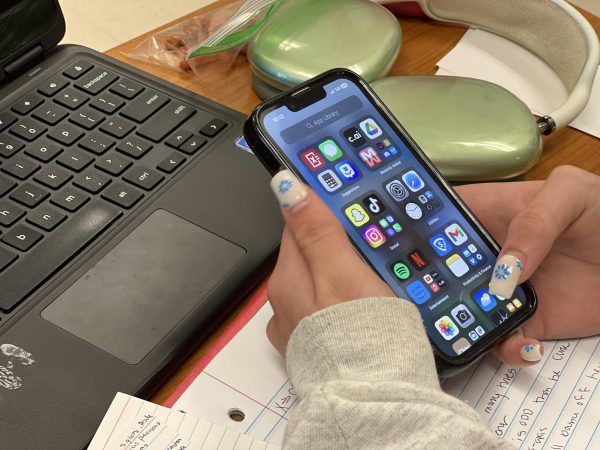Cell Phone Addiction Found to Change Chemistry of the Brain

The apparatus of our new-aged society, the object which keeps us and the rest of the world closely interconnected, yet divides us in the simplest of social situations: the cellphone. Chronic cellphone use, as well as cellphone addiction is at an all time high– but now, being a victim of cell-phone addiction may not just keep us isolated, but it could even be changing the chemistry of our brain.
The name for this distinct condition is called Nomophobia (No More Phone Phobia) and it affects more people than our society would like to admit. According to surveys done by the Pew Research Center, 77% of Americans own smartphones, with this number being only 35% in 2011.
In early December of last year, Professor of neuroradiology, Dr. Hyung Suk Seo of Seoul, South Korea conducted a study relating to cell phone addiction correlating with the chemistry of the brain. The findings were then released at the annual Radiological Society of North America in Chicago. For the study, 38 teenagers were given standardized cell-phone/Internet addicted questionnaires, with 19 of them scoring at a higher level of being cell-phone addicted and the other 19 being the control group. He then examined their brains using Magnetic Resonance Spectroscopy, an MRI which can detect changes in the chemical composition of the brain. What Suk Seo found is that in the brains of the addicted patients, there was a clear overabundance of gamma-Aminobutyric acid, or GABA, a neurotransmitter that suppresses brain activity, within the anterior cingulate cortex, a region of the limbic system, otherwise known as the brain’s emotional control center. The brain-quieting neurotransmitter’s primary functions are to subdue anxiety, calm, and work hand in hand with the bodies natural sleep cycle and circadian rhythm.
“Increased GABA in the anterior cingulate gyrus in internet and smartphone addiction may be related to the functional loss of integration and regulation of processing in the cognitive and emotional neural network,” indicates Suk Seo.
The fact that such a big part of our lives can be changing our brain may be frightening, but there is a bright side to this study. A dozen of the addicted teenagers underwent nine weeks of cognitive behavioral therapy where they participated in mindfulness exercises in weekly 75-minute sessions. Afterwards, the MRS of the dozen patients showed a significant reduction of GABA receptors, indicating that the ramifications of this addiction can be reversed.
Dr. Max Watermark, Chief of Neuroradiology at Stanford University stressed the fact that it is too early to tell if these chemical imbalances in the brain are related to mental illnesses, such as depression and anxiety, although previous research on overabundance of GABA shows a correlation with a number of possible side-effects, ranging from drowsiness to heightened anxiety. He also stresses that since it was such a small study, we should take the data with a grain of salt. Undoubtedly, though, the study can help with further research on addiction in general, as well as cell-phone addictions, which will hopefully be taken more seriously by our society.

Hello! This is my first year as an Opinions Editor and my second year being on Student Press. My main focus as a part of this program is to help share...








